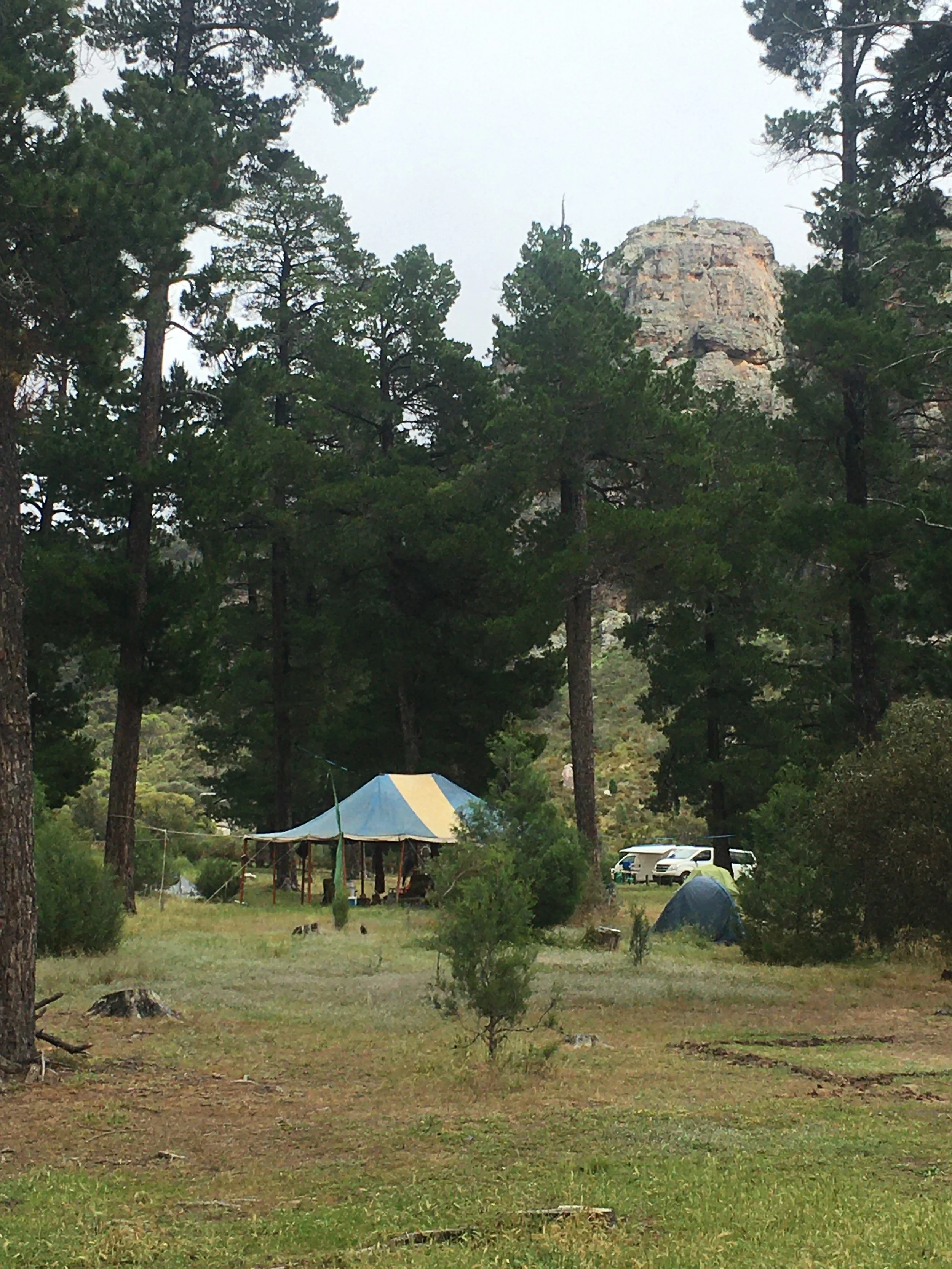Big Sky Country
Travelling from Sydney head down the Hume, past the growing wind farms near Gunning, cross the Murrumbidgee, an inch wide river for which they built a mile long bridge and for the first time understand why, cross the mighty Murray, unable to see either bank that marks the river’s normal channel. These are unusual times, every creek flowing, every paddock flooded, every hill green. Keep driving.
Turn right at Violet Town, and head west, and start the process of slowing down, mentally, and allow yourself to be charmed by the country towns that mark this route; Violet Town, Murchison, Rushworth. A pilgrims route of sorts.
To the campsite that is no longer allowed to be a campsite, yet there are permanent campsites setup. Keep driving.
Then onto Bendigo, a city that sleeps late, as I learnt when I failed in my search for a morning coffee. The beautiful imperious old buildings in the centre are still there, but I’ve seen them often enough now to look past them, to see the blight that affects every city in the south east of Australia – the new satellite suburb tacked on to the rump of the old, containing cloned houses built with no appreciation for their surroundings, clustered tightly, treeless, each a closed cell.
One such suburb had the rear fences backing onto the main road leaving town; in a land of wide open spaces no room for even a small buffer zone between a bedroom and a main road.
Surprised by our unwillingness to give to Bendigo the time allowed in our schedule, we continue to head west. Through the dry scrub atop a barren soil; we’re on the Wimmera Highway, but we’re not truly in the Wimmera yet.
Towards St Arnaud, the paddocks flatten, the trees thin, the sky expands; we’re in big sky country. There are advantages to living on the fringe of a big city, nestled in the foothills, but open skies and stunning sunsets are not among them; they’re the norm where we’re headed.
Horsham has the wide streets and grand buildings you’d expect of a city servicing a fertile farming region, but it’s not our destination, so stop for lunch, stock up on supplies, and keep driving.
Slow down through Natimuk, much to admire in this small town, but don’t stop till you get to – Mt Arapiles.
The arguments may continue about where Araps sits on the list of the world’s best climbing cliffs but The Pines is indisputedly the premier climbing campsite; no argument. I haven’t camped in them all, but I’ve stayed in enough to know – The Pines beats them all.
After turning in at the phone box, past the toilet block that hasn’t changed in more than 30yrs, we catch site of a young man in the middle of the camp, twirling a baton to a rhythm we can’t hear. We’ve arrived.
Thankfully our bureaucratic society still allows a few people to set-up semi-permanent camps for the season; I’ve never really liked them, but it’s good to know they’re still here. Most importantly, the intimacy between climbers is still here.
What has changed? The pines themselves are thinning. I mourned the initial felling of the ageing pines, and still miss the deep cool shade they provide, but I also cheered the grass and ground cover that appeared once they were gone. Sitting here now I can see a wallaby casually chewing grass in what used to be a dust bowl, and hear young climbers recount the dramas of their first multi-pitch outing on the Buttress. Ahh, The Pines!
Having circled the campsite looking for the optimum spot for our van, I switch off the engine, turn my eyes again to the familiar sites of the Pipes and the Bluffs, and prepare for the inevitable mental distortion that a climbing trip to Araps entails.



